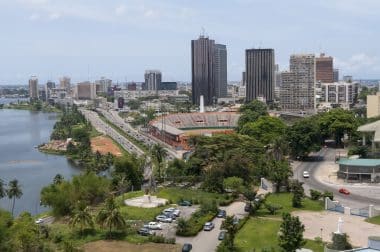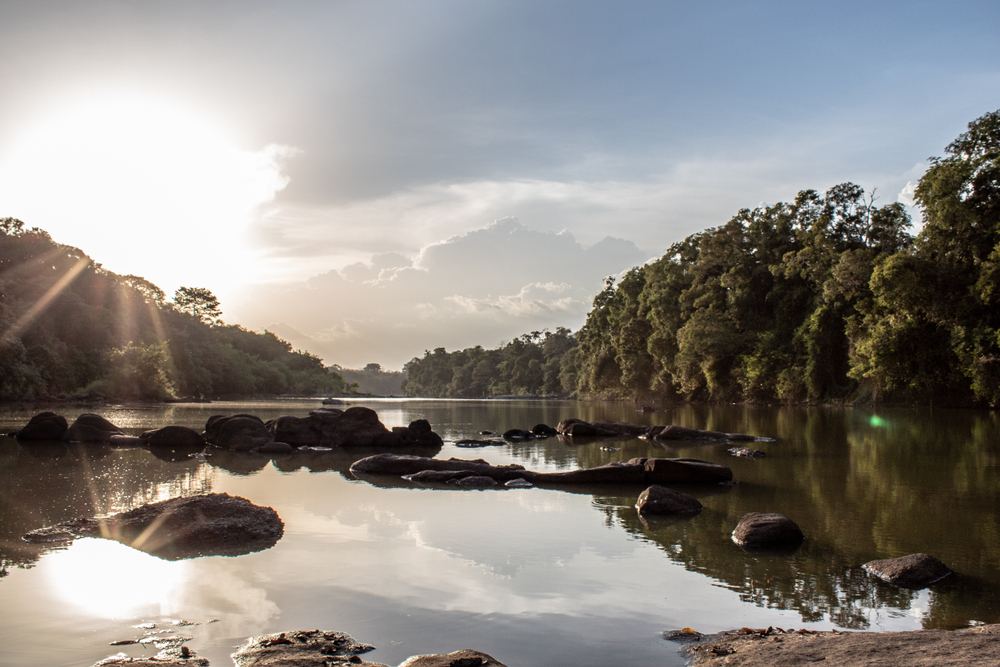The country of Ivory Coast is noticed by few travelers, although it has a lot to offer. They try to attract tourists to the country with the motto “Dream, sunbathe, swim, forget Europe for a moment and discover the deep black Africa”. Currently, however, very few guests come to Ivory Coast for a holiday, but the first tour operators have already discovered the country for themselves.
Côte d’Ivoire – The country at a glance
Beach vacationers will find long sandy beaches overgrown with palm trees. Fans of animals and plants get their money’s worth in the nature reserves and the peoples and cultures immerse the visitor in a completely different world. A great potential that has hardly been noticed so far. The Ivory Coast is slightly smaller than Germany and about the same size as Norway.
The many natural areas form contrasts and give rise to many different climate zones and vegetation. On the Atlantic coast there are the long sandy beaches, the bays and cliffs, swamps, lagoons and mangrove forests. In the interior you will find the rainforest, which is about 100 to 200 kilometers deep. The thicket of the jungle is broken up by small clearings where bananas, coffee and cocoa are grown. Further north you reach the so-called South Sudanese climate area and reach the plateau. The plateau is mainly cultivated by farmers and occupies most of the state’s area. Further north, you can only find the savannahs, where the nights are cool, the days warm and the dry periods sometimes last for weeks.
The Manhattan of Africa

The city of Abidjan is located on the Atlantic coast and is spread over several headlands. It is also known as the Manhattan of Africa because of its futuristic office towers, magnificent buildings and luxury shops in the immediate vicinity. The heart of the city, however, beats in the traditional districts, where the colourful life of the population is evident and the small restaurants entice you with all kinds of specialities. Markets offer an incredible abundance of goods and the city’s residents turn night into day. The museum “Musée des Civilisations de Côte d’Ivoire” offers a great insight into the culture and life of the tribes of the Ivory Coast.
At the gates of the city is the “Banko” National Park. It covers an area of about 3,000 hectares and is intended to preserve the tropical rainforest in its original form, otherwise it threatens to disappear. To the east you reach the large beaches, palm trees and hut villages line the way. The town of Grand-Bassam is well worth a visit. It was the capital of the then French colony and houses the magnificent buildings of that time. There are some bungalow settlements in this area of the country and the region is generally designed for tourism.
A real king
A detour to the north leads the holidaymaker to a true king. Bonzou II resides in the small town of Abengourou and watches over the Agni people. This ethnic group immigrated from Ghana in the 17th century and founded a powerful kingdom. The king and his subjects have been able to preserve their cultures to this day and transfer the foreigner to another culture.
In the west, many seaside resorts await

West of Abidjan, along the lagoon strip, the tourist reaches several more or less well-developed seaside resorts. The hinterland is best explored from the stilt dwelling village of Tiagba. By boat or on foot, the Assigny National Park can be explored. The jungle reserve covers an area of 300 square kilometres and is home to a number of elephants. A trip to the Tai National Park, which is located on the border with Liberia, is a bit more time-consuming. It is under the protection of UNESCO and, with a size of 5,500 square kilometers, is about twice the size of Saarland. The diverse vegetation and abundant wildlife are maintained by local institutes and the park is open to tourists.
The city of 18 mountains
A few hours north of the park is the city of Man, which has a population of 300,000. It is surrounded by mountains and forests, waterfalls, bamboo groves, liana bridges and coffee plantations. This region of Ivory Coast is home to the Yacouba, who are known for their ritual dances and handicrafts. A little further north is the administrative capital of the country. Yamoussoukro is a gigantic test-tube city that seems almost bizarre. Very few people live in the city, although it is hard to beat in size. The basilica “Notre Dame de la Paix”, a replica of St. Peter’s Basilica, alone has a gigantic dimension.


